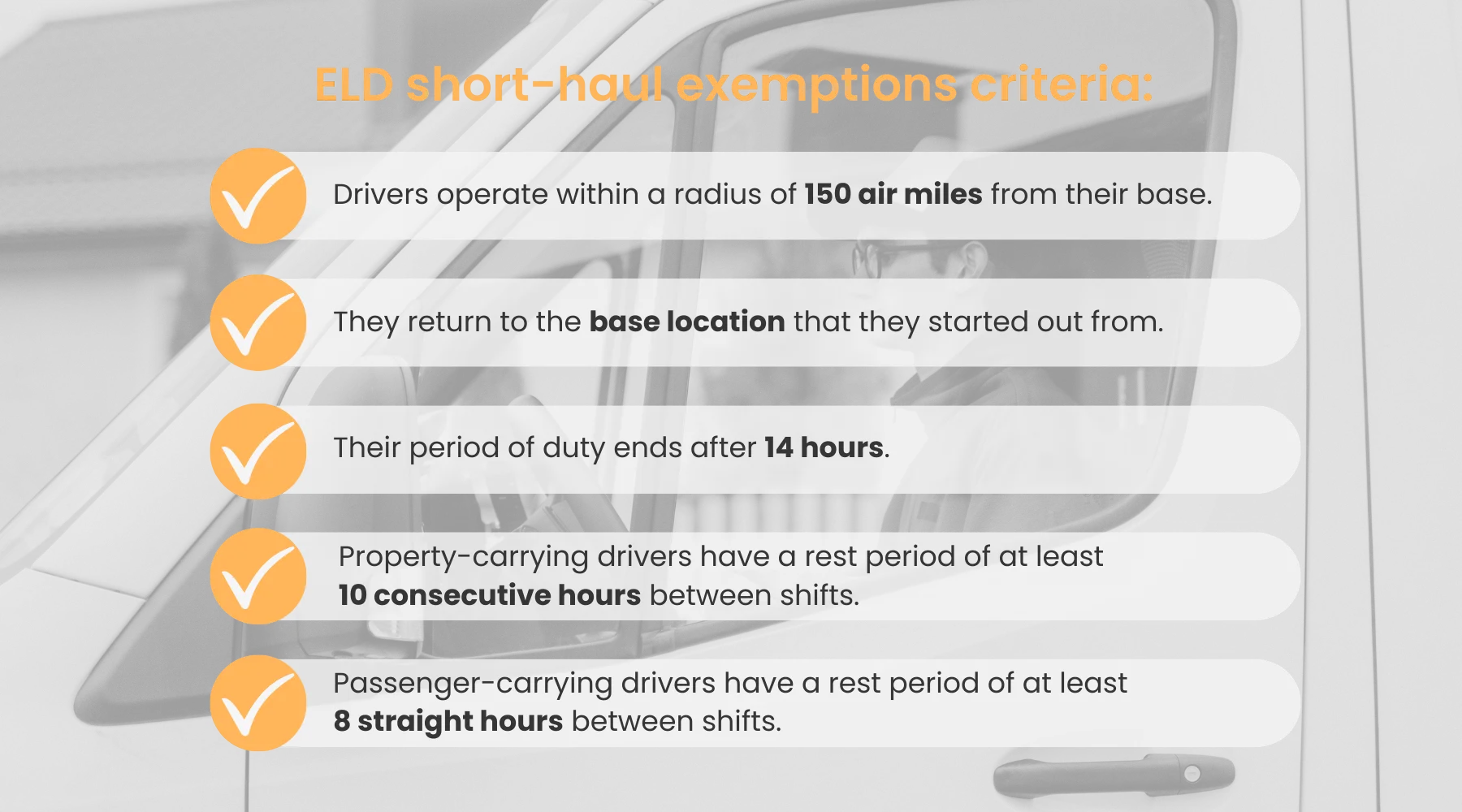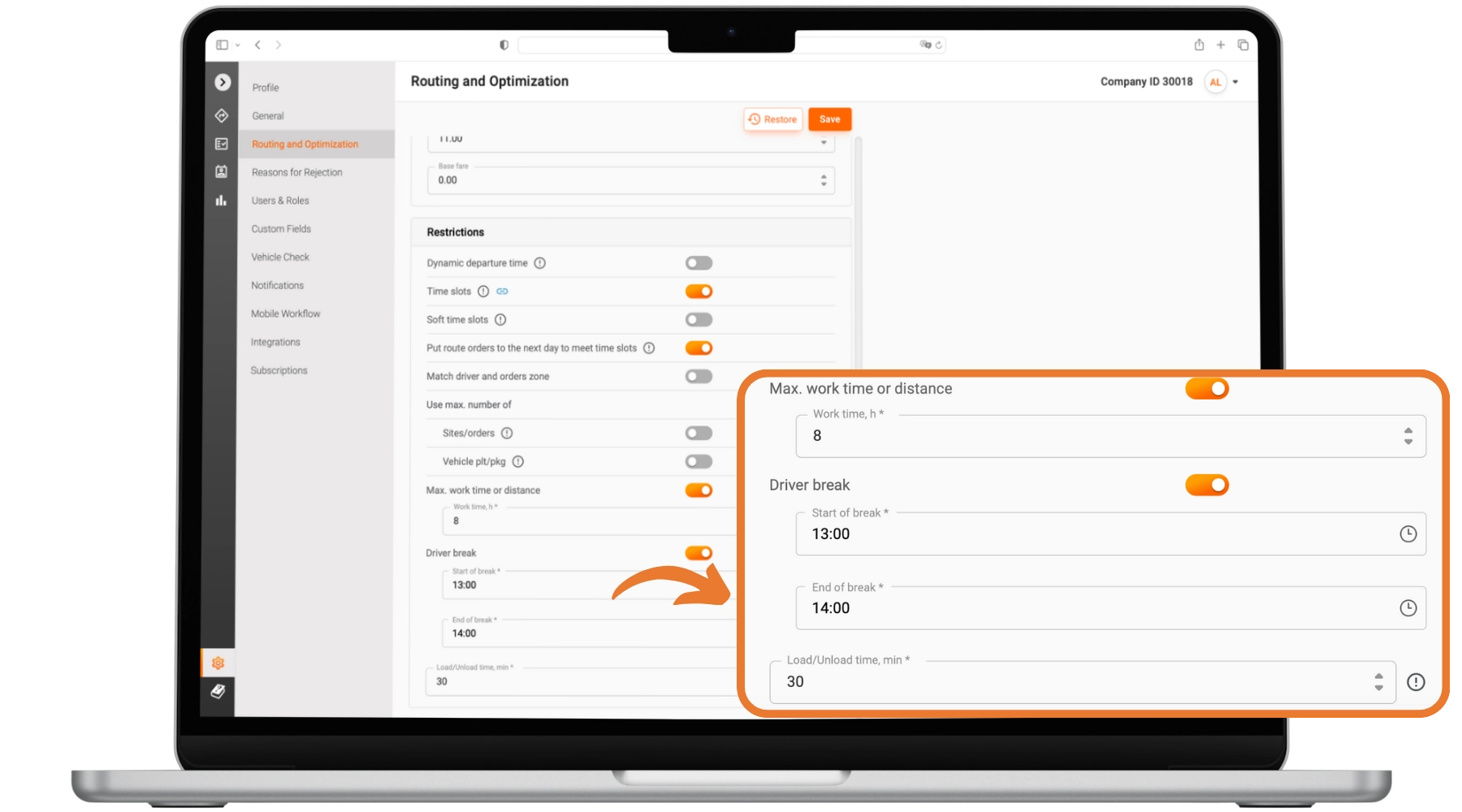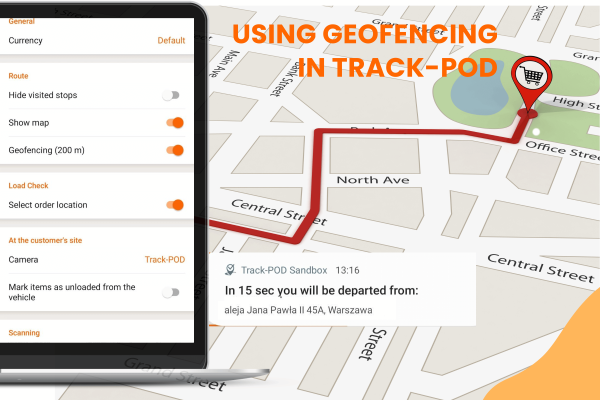- Last Mile Delivery
- Industries
How Relevant are ELD Short-Haul Exemptions to your Drivers?

by
Mike Foster
March 18, 2024
Electronic logging devices (ELDs) are used in vehicles to monitor and report on trip times, routes taken, and driver details.
In many parts of the world, governments are putting mandates into place to enforce the use of ELD devices in commercial vehicles to track vehicle activity and obtain accurate hours of service (HOS) figures for commercial drivers. This legislation enforces companies and drivers to comply with the maximum of hours worked per shift thus reducing driver fatigue and promoting safety on the roads.
Compliance with the ELD mandate is, therefore, essential for the safety of drivers and the public, and the accuracy of the data collected has positive implications for drivers and logistics companies.
Historically, the transportation industry has been plagued with problems involving the manipulation of HOS claims and driving statistics, which are now set to diminish as companies upgrade their systems in compliance with the rules.
Use the below to jump to the most relevant part:
Drivers face many hazards and frustrations out on the road, much of it due to fatigue, and the ELD mandate has been implemented to relieve some of this frustration and to promote driver and public safety.
There are exceptions to the mandate rules, mainly affecting the types of businesses that run short-haul operations within a radius of 150 miles from their main point of business.
To apply for an exemption from the mandate, the drivers who work for these companies may not work more than 14 hours per day, and they need to record a minimum off-duty period of 10 consecutive hours between shifts.
Businesses may apply for exemption from the mandate if they consider themselves compliant with the above exceptions. Drivers who comply with the ELD short-haul exception mandate are not required to submit figures regarding their shifts worked; however, their companies must keep track of start and end times and ensure that the routes traveled do not overstep the 150-mile boundary.
What does ELD stand for?
ELDs, or Electronic Logging Devices, are devices connected to trucks and delivery vehicles for logging shift times, driving hours, distances traveled, engine status, and locations visited.

In the United States, for example, the Department of Transportation (DOT) has issued a mandate for logistics and courier companies to install ELDs for the purposes of recording drivers’ hours worked and distances traveled. ELDs also collect information such as off-duty hours and even sleep berth times.
The benefits of installing ELDs include the following:
- Drivers and companies can accurately track their performance.
- ELDs reduce the need for manual paperwork, saving administration time.
- They ensure compliance with the road travel industry.
- ELD use prevents the falsification of driving statistics.
Most commercial motor vehicle drivers need the installation of an ELD, specifically:
- Drivers who operate vehicles weighing more than 10,000 pounds.
- Vehicles designed to carry more than eight passengers (including the driver) for compensation.
- Vehicles designed to carry more than 16 passengers (including the driver) without compensation.
- Vehicles transporting hazardous substances.
- Interstate drivers who transport people or cargo across borders.
Overview of the ELD mandate
FMSCA in the US and Canada have introduced strict government regulations, making using ELDs in commercial vehicles mandatory. Historically, European governments had similar mandates regarding the tachometer, the predecessor to ELDs, changing the rules to keep up with technological changes.
The mandates in ELDs and tachometers are mainly to promote safety but also to force accurate data collection, making it difficult for drivers and companies to submit fraudulent statistics.
Short-haul drivers tend to stop more frequently than their long-haul counterparts, and they are more inclined to drive in cities and industrial areas with heavy traffic. These factors, combined with the admin-intense activities involved in recording their shift times, add to their stress and fatigue levels, affecting their safety and that of other road users.
In December 2017, the mandate for compulsory ELDs was due to take effect; however, the Owner-Operator Independent Drivers Association (OOIDA) challenged the mandate on the grounds that it went against the Fourth Amendment. In April 2017, the association filed a petition requesting that the Supreme Court review the ruling. However, the Supreme Court declined the case, and the ELD mandate went ahead in December 2017.
A comprehensive document detailing the ELD rules, explaining the regulations around exemptions, and giving the technical specifications for a compliant ELD has been published by FMSCA. It also describes the FMSCA’s self-certification and registration processes.
The implementation of the mandate has meant increased safety in the transportation industry, as well as transparency. ELDs enable accurate tracking of vehicles and drivers.
Not only do drivers have accurate statistics that minimize the volume of administration tasks, but they have also become more accountable for their time and the way in which they manage their vehicles.
ELDs also empower companies to use route planning and vehicle tracking facilities as part of the software package, enhancing operational efficiency and customer satisfaction.
Exploring short-haul exemptions
In 2020, FMCA changed many regulations, including introducing short-haul exemptions for commercial drivers. Drivers who qualify for an exemption need to meet the following criteria:
- Drivers operate within a radius of 150 air miles from their base.
- They return to the base location that they started out from.
- Their period of duty ends after 14 hours.
- Property-carrying drivers have a rest period of at least 10 consecutive hours between shifts.
- Passenger-carrying drivers have a rest period of at least 8 straight hours between shifts.
One of the main advantages of this ruling is that drivers are saved from having to keep track of their duty status breaks each day, thus reducing their administrative workload substantially and saving time. However, they are required to record their start and end times and the number of hours worked in a day. This can be done by means of a daily timecard if no ELD tracking device is present.

The short-haul mandate applies to both drivers with a commercial driver’s license (CDL) and non-CDL licensed drivers.
Companies that operate under these conditions must keep statistics for six months to qualify for exemption. They need to provide timecards for each driver, showing:
- Daily starting and ending times.
- Total number of hours the driver works each day.
- The total number of hours the driver has worked in the preceding seven days.
Exceeding the 150-mile radius or working hours restrictions
FMCSA gives a breakdown of vehicle specifications and the application of rules based on the weight of the vehicle or on the combination of vehicle and trailer. These rules include instances where drivers use commercial vehicles to transport personal property.
A combination of gross vehicle weight rating (GVWR), gross vehicle weight (GVW), gross combination weight rating (GCWR), or gross combination weight (GCW), whichever is greater, will determine what rules apply.
Generally speaking, if the vehicle or vehicle and trailer weighs more than 26,000 pounds, the driver may need an ELD to record their data, and CDL licensure may be required.
Trucksafe, a team of attorneys working together to demystify the regulations within the Department of Transportation (DOT), provides us with a comprehensive explanation of the rules regarding the ELD mandate, including the exemptions and exceptions.
How does ELD exemption work?
Drivers who comply with the ELD exemption rules may not exceed the maximum hours or mileage for more than eight days in any 30-day period.
If a driver operates within the 150-mile radius and 14-hour ruling on the first day, he is exempt from providing statistics for that day. However, if the hours or mileage are exceeded on any day in the month, records must be submitted, detailing starting and ending times, total hours worked, and the number and duration of breaks in between.
The driver is also required to take a 30-minute break on that day as soon as he realizes he is about to go over the maximum 14-hour rule.
Compliant drivers are not required to fit ELD devices in their vehicles, but paper records need to be maintained every day that the hours or mileage are exceeded.
Companies that operate outside the 150-mile radius or require their drivers to work longer shifts are required to have ELD devices fitted to their vehicles.
As a logistics or fleet manager who is aware that there will be days when your drivers are expected to travel beyond the 150-mile radius or exceed the 14-hour shift, it may be in your interests to consider installing ELD devices anyway, as it saves administration time and enables both driver and logistics staff to store and retrieve accurate records in cases of unexpected breaches of the requirements.
Vehicles operating in the following areas of business are not required to keep records of duty status:
- Tow-away operations, where more than one set of wheels is on the roadway.
- Delivery of a vehicle where the vehicle that is being driven is the commodity.
- Vehicles towing motorhomes or recreational vehicle trailers.
- Vehicles manufactured before 2000 are exempt.
Other business models that are likely to be exempt by the very nature of their operations and the restricted areas in which they operate include:
- Dump truck operations.
- Ready-mix haulers.
- Local delivery providers.
- Container haulers working in seaport locations.
Drivers who transport hazardous materials or medical waste are not exempt while transporting agricultural produce and animals has a separate, complex set of rules.
Benefits and challenges of short-haul exemptions
Exemption from the ELD mandate and from having to provide detailed and accurate figures has definite benefits.
The administrative burden placed on drivers, logistics managers, accounting personnel, and payroll personnel is immense, and the exemption from recording hours worked, rest periods, and hours taken to return to the starting point is time-consuming and, if done manually, not consistently accurate. By doing away with the need to produce detailed statistics, the time saved can be allocated to more productive activities for all concerned.
Exemption, however, does mean that figures may not be accurately reported, and this could result in disputes over wages paid to drivers and drivers working longer hours than is statutorily acceptable, leading to fatigue and compromising road safety.
It also means that your company would need to keep a close eye on changes to regulations or changes within your business that would suddenly render you non-compliant. In spite of not having to submit figures, companies still need to keep accurate records of the number of hours worked by drivers per day.
A suggestion is to optimize your routes to ensure continued compliance and, if necessary, establish depots in other areas to increase your operating radius.
How to determine if short-haul exemptions apply to your drivers
Drivers who do less than 14 hours per day and less than 8 hours of consecutive driving time and who keep to a radius of 150 miles from their base location qualify for exemption under the ELD mandate.
Once your business has qualified for exemption, it would be wise to maintain this status, as you may be required to prove it at some point.
If your compliance status changes and you are found non-compliant by the law, your business may face citations, reduced CSA scores, and substantial fines. You will also be required to renew your status, which means tracking vehicles and submitting figures all over again.
Integrating technology with short-haul operations
Logistics coordinators, fleet managers, and business owners managing short-haul trips have their work cut out for them: planning delivery routes, tracking vehicles, managing drivers’ schedules, ensuring timely deliveries, and keeping customers happy.
All of these activities bring with them mountains of tedious paperwork, with regulations that are in place for good reason, but they certainly complicate matters.
Luckily, some software providers like Track-POD offer solutions to the above challenges, producing accuracy and transparency and adding a professional touch to how you operate your business.

Track-POD’s route planning software will optimize your routes for you, making sure that the shortest, most effective route is planned for your drivers to follow. You can program the 150-mile boundary into the plan and the required number of hours per day, including rest periods.
Whether you qualify for exemption or not, Track-POD is there to support the accumulation of data to keep you compliant with the ELD mandate or simply to provide the necessary analytics that both drivers and management are expected to deliver under exemption rules.
Track-POD’s software solutions will enhance your business operations, giving you valuable insights into the efficiency of your logistics and providing you with the tools to envision and make the necessary changes for optimizing your business.
Conclusion
In closing, we can see that the ELD mandate plays an important role in gathering drivers’ details and shift data. ELD software captures vehicle and driver activity automatically, relieving the stress placed on drivers and administration staff to complete copious amounts of paperwork.
Compliance with the mandate promotes the accuracy of reporting as well as the well-being, safety, and remuneration of the drivers. Logistics companies and fleet managers must understand the complexities of the ELD mandate and how it applies to their particular areas of business.
It’s important too, that short-haul management knows what is expected of them to maintain compliance with their short-haul exemption privileges and that they keep the records required of them so that they can prove compliance when asked to do so.
Checking drivers’ shifts worked, their mileage traveled, and the routes followed should be part of your daily or weekly procedure, but the manual process is labor-intensive and time-consuming.
Installing a reliable planning and tracking system will do all the groundwork for you, leaving time for you and your managers to analyze the figures and make essential decisions about maintaining compliance and improving operational efficiency.
About The Author
Mike Foster
A dynamic writer whose passion for technology and Software as a Service (SaaS) is the driving force behind his compelling work.








